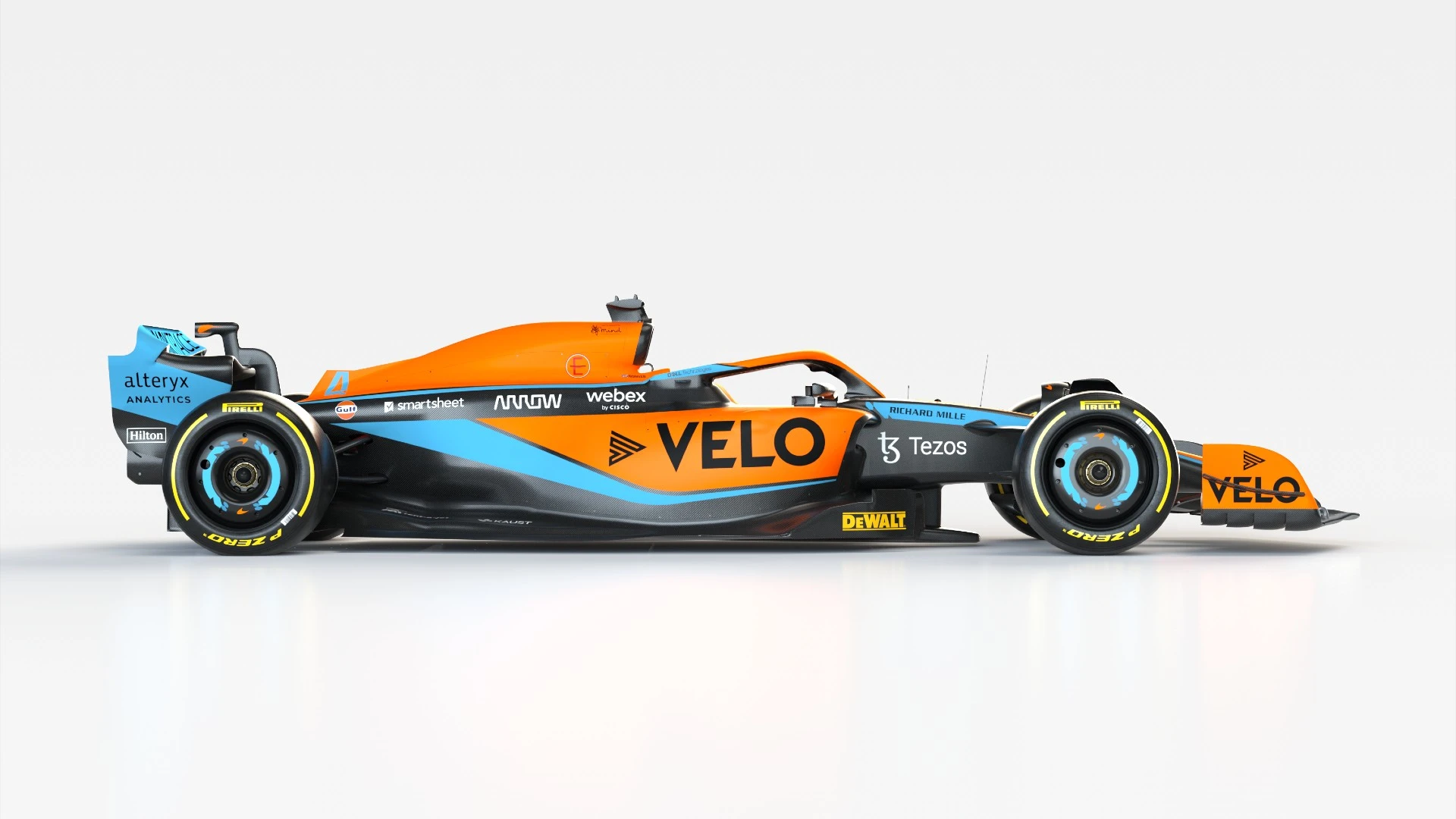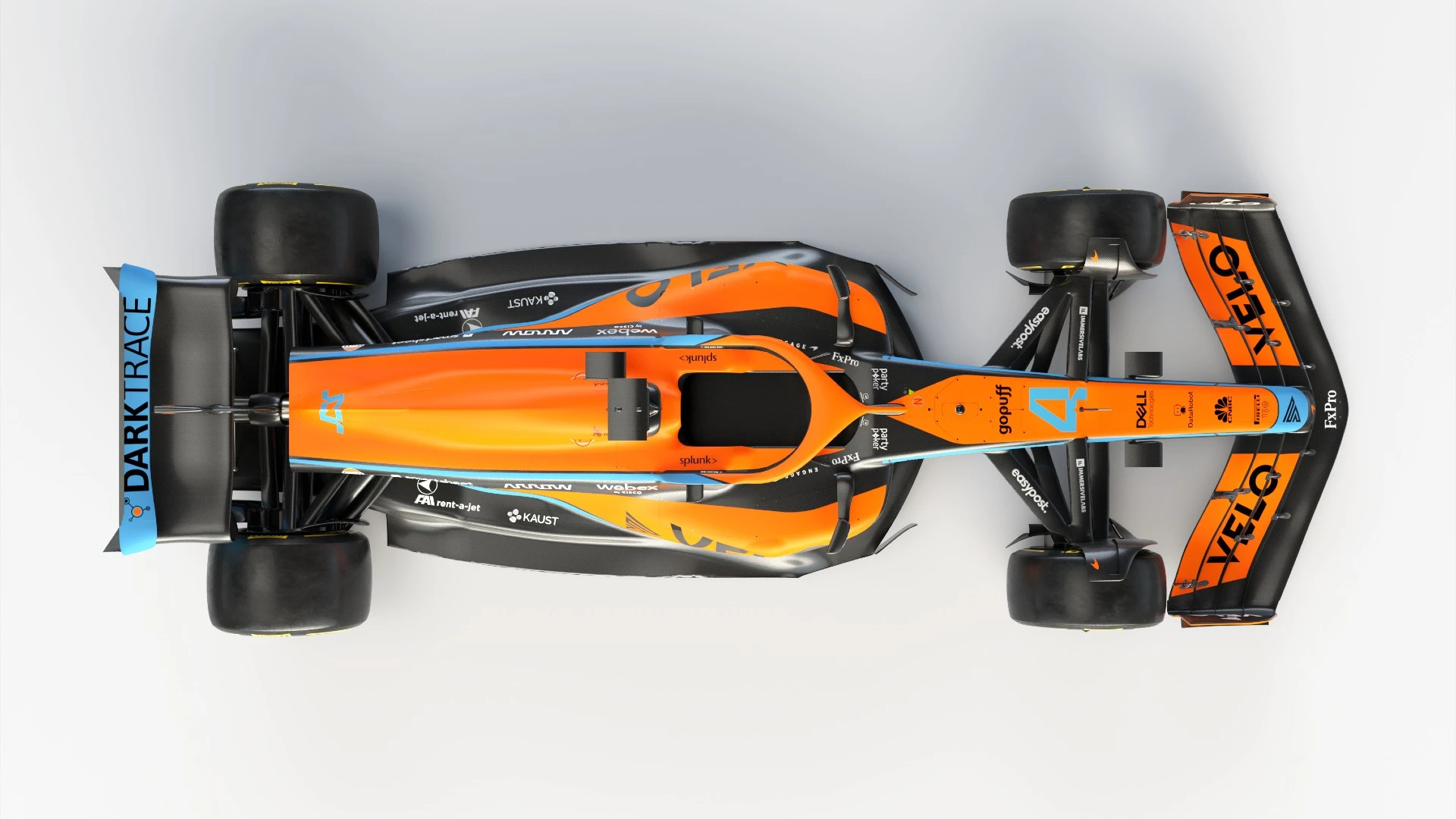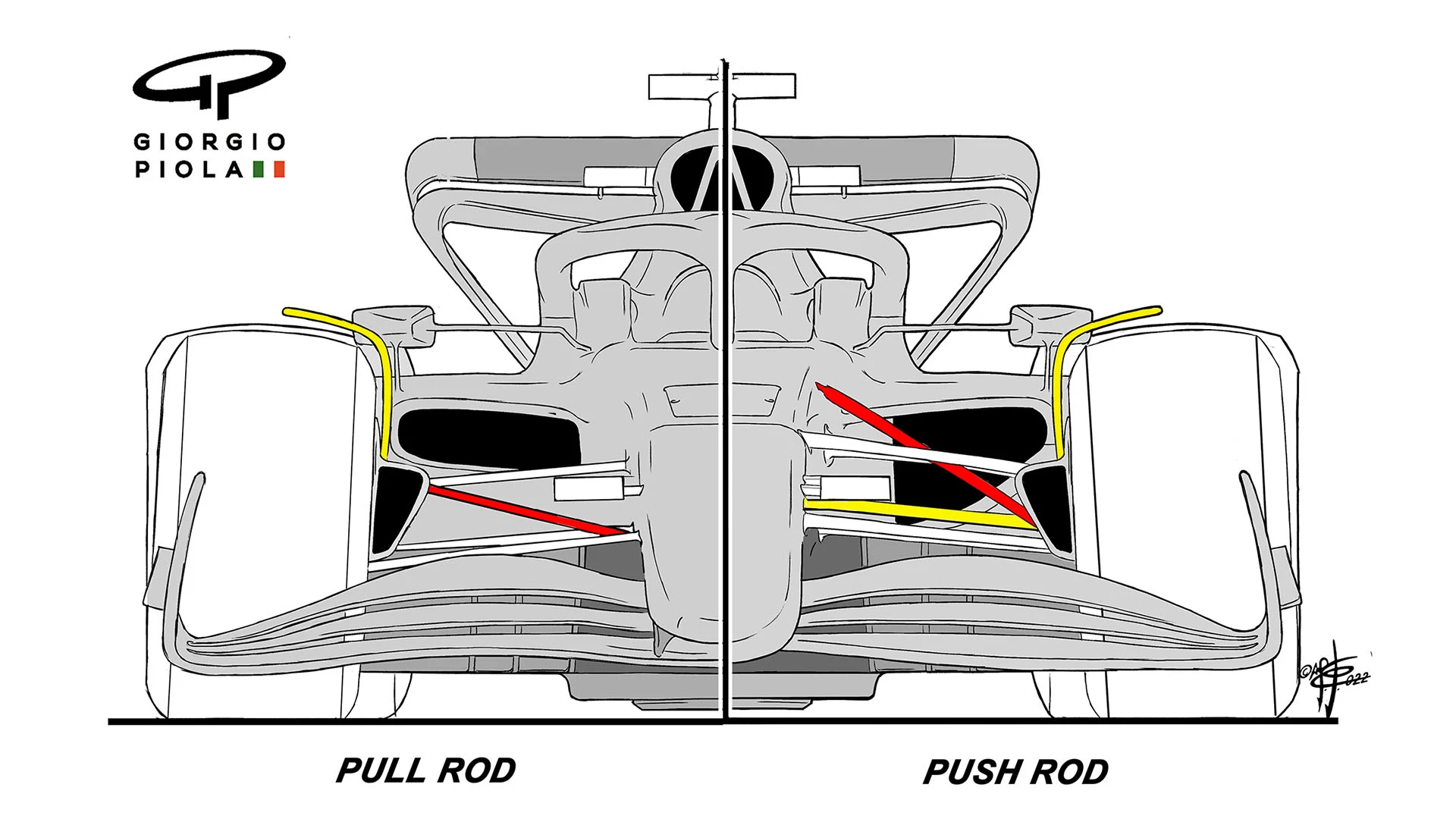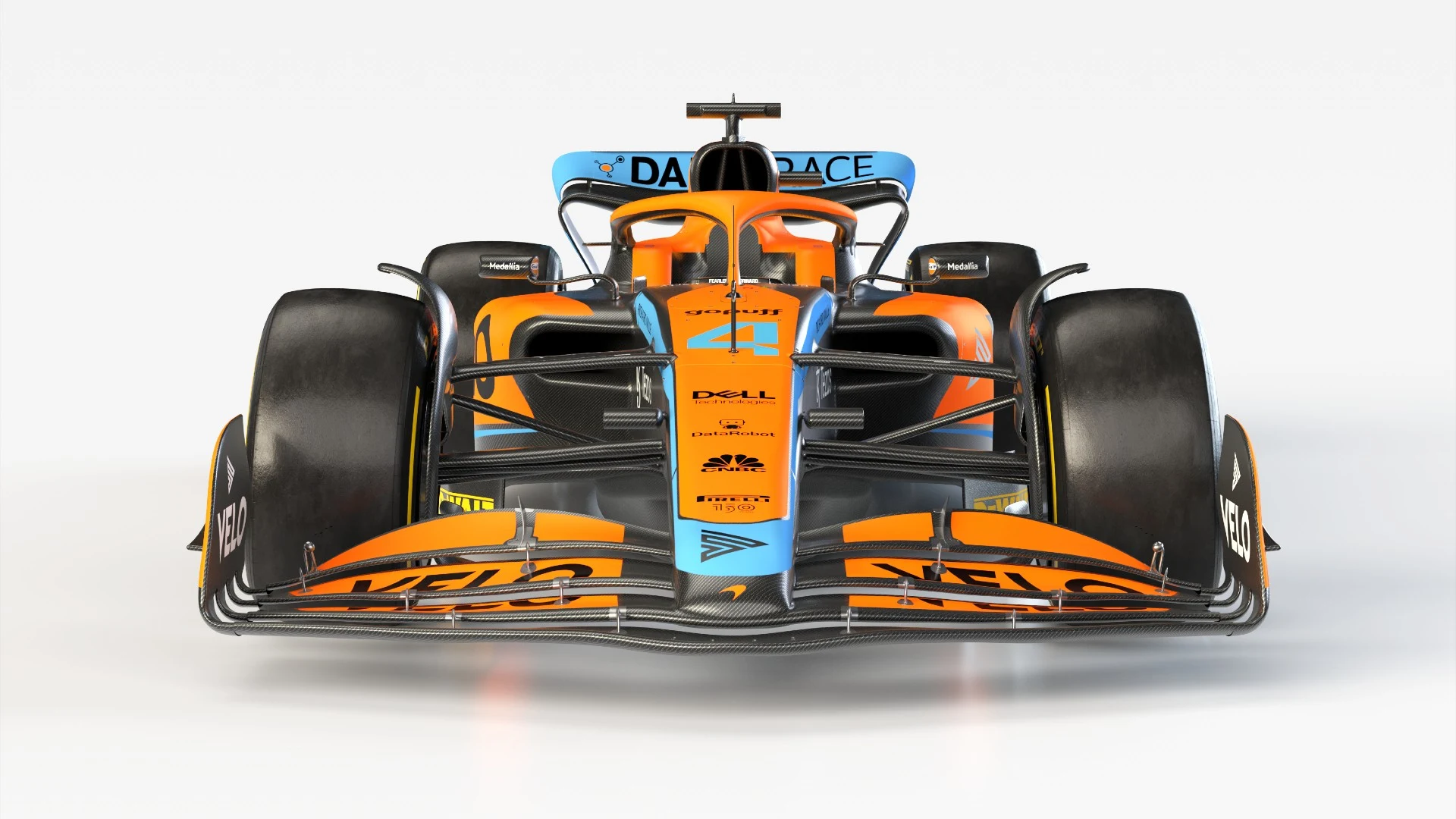McLaren have unveiled their new MCL36, a car which overturns the recent convention regarding front and rear suspension systems.
It’s an elegant-looking car, and although it uses the same Mercedes power unit as the recently-revealed Aston Martin, the layout of its cooling system appears to be quite different, and hence so is the general geometry of the bodywork.
Conventional Bodywork
Unlike the Aston, the McLaren’s sidepods have little apparent undercut but do taper in very extensively at the rear to give quite an extreme coke bottle section.
READ MORE: McLaren showcase bold new livery as they reveal 2022 challenger, the MCL36
This creates a lot of volume for the airflow to expand into, accelerating the flow all the way down the sides, as it rushes to fill the low-pressure area created by the expanded space. The outer floor surfaces of the launch car were plainly not what will be raced, featuring none of the flicks and line changes which will be seen on the real ones and which help accelerate the flow further.
There has been no Aston-like attempt at a double floor in this region, and hence no need to have inclined the radiators so horizontally – and this has allowed the sidepods their greater coke bottle section.

In plan view, the McLaren’s teardrop-shape (fat at the front around the radiators, slimming down considerably at the rear) is much more Haas-like, but without quite the same width at the front and with a fatter section engine cover aft of the roll hoop running quite far back.
This suggests that some of the cooling channels have been moved into that area, which will have allowed the front of the sidepods to be not quite as wide as those of the Haas.
READ MORE: How Haas plan to return to the F1 midfield in 2022

Suspension Rethink
Where the McLaren is very different to either the Haas or Aston Martin is in its suspension layout – both front and rear.
In place of the conventional push-rod front/pull-rod rear is the opposite! McLaren have opted for a pull-rod front (last used at McLaren in 2013). This places the inboard rockers down low to give the aerodynamicists their preferred airflow route to the venturi tunnel inlets at the mouth of the sidepods. These venturi tunnels create as much as 50% of an F1 car’s total downforce under the new regulations, a much greater proportion than the floor generated previously.
TECH TUESDAY: How 2022’s suspension overhaul could shuffle the competitive order
McLaren have shaped their front wing in sympathy with the suspension layout, and it is notable that the flap adjusters are a long way across the width of the wing. They will create vortices of air which will be directed in a way which enhances the flow of air from the wing to those venturi inlets, crucially important, especially with no barge boards there to help.

At the rear, McLaren have dispensed with the conventional pull-rod arrangement for push-rod. Under the previous regulations, the placement of the diffuser made it advantageous to place the rockers down low to maximise the airflow through the floor.
READ MORE: ‘It's definitely a big opportunity’ says Norris as McLaren reveal 2022-spec MCL36
But the placement of the new venturi exits is quite different and has triggered McLaren into a reassessment, with the rockers now moved up out of the way – for the exact same reason as they were lowered under the old regs!
Three new cars (and one fake), three very different solutions to the new regulations. Can they all be right?
Everything you need for the 2022 Formula 1 season
DIARY DATES: The 2022 F1 calendar and F1 car launch schedule
WATCH: Everything you need to know about the new 2022 F1 car
2022 F1 GRID – All the drivers and teams racing this season
10 things every Formula 1 fan should be excited for in 2022
5 bold predictions for the 2022 season – but how many will come true?
Next Up
Related Articles
 Norris ‘would love’ to battle with Hamilton in 2026
Norris ‘would love’ to battle with Hamilton in 2026 F1 AcademyPUMA select Rachel Robertson for 2026 season
F1 AcademyPUMA select Rachel Robertson for 2026 season.webp) The 10 youngest drivers to race in F1 – and how they fared
The 10 youngest drivers to race in F1 – and how they fared Bottas on how F1 drivers will adapt to the 2026 regulations
Bottas on how F1 drivers will adapt to the 2026 regulations Hadjar details what excites him most about racing for Red Bull
Hadjar details what excites him most about racing for Red Bull.webp) What F1 drivers have been up to over the festive holidays
What F1 drivers have been up to over the festive holidays

